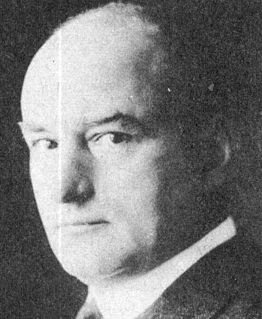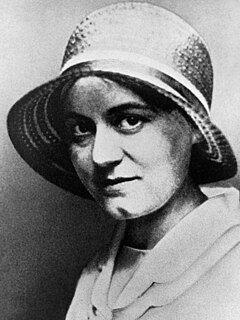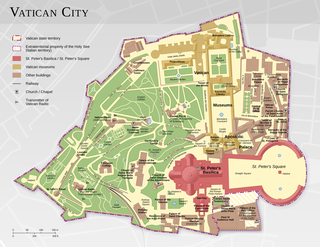 W
WThe bombing of Rome in World War II took place on several occasions in 1943 and 1944, primarily by Allied and to a smaller degree by Axis aircraft, before the city was invaded by the Allies on June 4, 1944. Pope Pius XII was initially unsuccessful in attempting to have Rome declared an open city, through negotiations with President Roosevelt via Archbishop Francis Spellman. Rome was eventually declared an open city on August 14, 1943 by the defending forces.
 W
WCatholic bishops in Nazi Germany differed in their responses to the rise of Nazi Germany, World War II, and the Holocaust during the years 1933–1945. In the 1930s, the Episcopate of the Catholic Church of Germany comprised 6 Archbishops and 19 bishops while German Catholics comprised around one third of the population of Germany served by 20,000 priests. In the lead up to the 1933 Nazi takeover, German Catholic leaders were outspoken in their criticism of Nazism. Following the Nazi takeover, the Catholic Church sought an accord with the Government, was pressured to conform, and faced persecution. The regime had flagrant disregard for the Reich concordat with the Holy See, and the episcopate had various disagreements with the Nazi government, but it never declared an official sanction of the various attempts to overthrow the Hitler regime. Ian Kershaw wrote that the churches "engaged in a bitter war of attrition with the regime, receiving the demonstrative backing of millions of churchgoers. Applause for Church leaders whenever they appeared in public, swollen attendances at events such as Corpus Christi Day processions, and packed church services were outward signs of the struggle of ... especially of the Catholic Church - against Nazi oppression". While the Church ultimately failed to protect its youth organisations and schools, it did have some successes in mobilizing public opinion to alter government policies.
 W
WPopes Pius XI (1922–1939) and Pius XII (1939–1958) led the Catholic Church during the rise and fall of Nazi Germany. Around a third of Germans were Catholic in the 1930s, generally in southern Germany; Protestants dominated the north. Although the German Catholic church had opposed the Nazi Party, the Catholic-aligned Centre Party capitulated in 1933. In the 1933 elections, the percentage of Catholics voting for the Nazi Party was lower than the national average. Adolf Hitler and several other key Nazis had been raised Catholic, but became hostile to the church in adulthood; Article 24 of the NSDAP party platform called for conditional toleration of Christian denominations and the 1933 Reichskonkordat treaty with the Vatican purportedly guaranteed religious freedom for Catholics, but the Nazis were essentially hostile to Catholicism. Catholic press, schools, and youth organizations were closed, property was confiscated, and about one-third of its clergy faced reprisals from authorities; Catholic lay leaders were targeted during the Night of the Long Knives. The Church hierarchy tried to cooperate with the new government, but Pius XI's 1937 encyclical Mit brennender Sorge accused the government of hostility to the church.
 W
WSeveral Catholic countries and populations fell under Nazi domination during the period of the Second World War (1939–1945), and ordinary Catholics fought on both sides of the conflict. Despite efforts to protect its rights within Germany under a 1933 Reichskonkordat treaty, the Church in Germany had faced persecution in the years since Adolf Hitler had seized power, and Pope Pius XI accused the Nazi government of sowing 'fundamental hostility to Christ and his Church'. The concordat has been described by some as giving moral legitimacy to the Nazi regime soon after Hitler had acquired quasi-dictatorial powers through the Enabling Act of 1933, an Act itself facilitated through the support of the Catholic Centre Party. Pius XII became Pope on the eve of war and lobbied world leaders to prevent the outbreak of conflict. His first encyclical, Summi Pontificatus, called the invasion of Poland an "hour of darkness". He affirmed the policy of Vatican neutrality, but maintained links to the German Resistance. Despite being the only world leader to publicly and specifically denounce Nazi crimes against Jews in his 1942 Christmas Address, controversy surrounding his apparent reluctance to speak frequently and in even more explicit terms about Nazi crimes continues. He used diplomacy to aid war victims, lobbied for peace, shared intelligence with the Allies, and employed Vatican Radio and other media to speak out against atrocities like race murders. In Mystici corporis Christi (1943) he denounced the murder of the handicapped. A denunciation from German bishops of the murder of the "innocent and defenceless", including "people of a foreign race or descent", followed.
 W
WCatholic clergy involvement with the Ustaše covers the role of the Croatian Catholic Church in the Independent State of Croatia (NDH), a Nazi puppet state created on the territory of Axis-occupied Yugoslavia in 1941.
 W
WCrux Ansata, subtitled 'An Indictment of the Roman Catholic Church' by H. G. Wells is a wartime book first published in 1943 by Penguin Books, Harmondsworth : Penguin Special No. 129. The U. S. edition was copyrighted and published in 1944 by Agora Publishing Company, New York, with a portrait frontispiece and an appendix of an interview with Wells recorded by John Rowland. The U.S. edition of 144 pages went into a third printing in August 1946.
 W
WHitler's Pope is a book published in 1999 by the British journalist and author John Cornwell that examines the actions of Eugenio Pacelli, who became Pope Pius XII, before and during the Nazi era, and explores the charge that he assisted in the legitimization of Adolf Hitler's Nazi regime in Germany, through the pursuit of a Reichskonkordat in 1933. The book is critical of Pius' conduct during the Second World War, arguing that he did not do enough, or speak out enough, against the Holocaust. Cornwell argues that Pius's entire career as the nuncio to Germany, Cardinal Secretary of State, and Pope, was characterized by a desire to increase and centralize the power of the Papacy, and that he subordinated opposition to the Nazis to that goal. He further argues that Pius was antisemitic and that this stance prevented him from caring about the European Jews.
 W
WAugust Hlond was a Polish cardinal of the Roman Catholic Church, who was Archbishop of Poznań and Gniezno in 1926 and Primate of Poland. He was then appointed as the Archbishop of Gniezno and Warsaw in 1946.
 W
WThe Myth of Hitler's Pope: How Pope Pius XII Rescued Jews from the Nazis is a 2005 book by American historian and Rabbi David G. Dalin. It was published by Regnery Publishing.
 W
WDuring the Second World War, the Roman Catholic Church protested against Aktion T4, the Nazi involuntary euthanasia programme under which the mentally ill, physically deformed, and incurably sick were to be killed. The protests formed one of the most significant public acts of Catholic resistance to Nazism undertaken within Germany. The euthanasia programme began in 1939, and ultimately resulted in the murder of more than 70,000 people who were senile, mentally handicapped, mentally ill, epileptics, cripples, children with Down's Syndrome, or people with similar afflictions. The murders involved interference in Church welfare institutions, and awareness of the murderous programme became widespread. Church leaders who opposed it – chiefly the Catholic Bishop Clemens August von Galen of Münster and Protestant Bishop Theophil Wurm – were therefore able to rouse widespread public opposition.
 W
WNazi ideology could not accept an autonomous establishment whose legitimacy did not spring from the government. It desired the subordination of the church to the state. To many Nazis, Catholics were suspected of insufficient patriotism, or even of disloyalty to the Fatherland, and of serving the interests of "sinister alien forces". Nazi radicals also disdained the Semitic origins of Jesus and the Christian religion. Although the broader membership of the Nazi Party after 1933 came to include many Catholics, aggressive anti-Church radicals like Joseph Goebbels, Martin Bormann and Heinrich Himmler saw the kirchenkampf campaign against the Churches as a priority concern, and anti-church and anticlerical sentiments were strong among grassroots party activists.
 W
WDuring the Second World War, Pope Pius XII maintained links to the German resistance to Nazism against Adolf Hitler's Nazi regime. Although remaining publicly neutral, Pius advised the British in 1940 of the readiness of certain German generals to overthrow Hitler if they could be assured of an honourable peace, offered assistance to the German resistance in the event of a coup and warned the Allies of the planned German invasion of the Low Countries in 1940. The Nazis considered that the Pope had engaged in acts equivalent to espionage.
 W
WThe reorganization of occupied dioceses during World War II was an issue faced by Pope Pius XII of whether to extend the apostolic authority of Catholic bishops from Nazi Germany and Fascist Italy to German-occupied Europe during World War II.
 W
WSeat 12, also known as Operation Seat 12, was an alleged disinformation campaign of communist propaganda during the Cold War to discredit the moral authority of the Vatican because of its outspoken anticommunism. The plot was disclosed in 2007 by Ion Mihai Pacepa, a general who headed the Romanian secret service before defecting to the West in 1978.
 W
WMyron Charles Taylor was an American industrialist, and later a diplomat involved in many of the most important geopolitical events during and after World War II.
 W
WVatican City pursued a policy of neutrality during World War II, under the leadership of Pope Pius XII. Although the city of Rome was occupied by Germany from 1943 and the Allies from 1944, Vatican City itself was not occupied. The Vatican organised extensive humanitarian aid throughout the duration of the conflict.
 W
WBombings of Vatican City occurred twice during World War II. The first occasion was on the evening of 5 November 1943, when a plane dropped bombs on the area south-west of Saint Peter's Basilica, causing considerable damage but no casualties. The second bombing, which affected only the outer margin of the city, was at about the same hour on 1 March 1944, and caused the death of one person and the injury of another.
 W
WKarl Wolff was a German SS functionary and war criminal. He was Chief of Personal Staff Reichsführer-SS and an SS liaison to Adolf Hitler until his replacement in 1943. He ended World War II as the Supreme SS and Police Leader in occupied Italy. He escaped prosecution at the Nuremberg Trials, apparently as a result of his participation in Operation Sunrise. In 1964, Wolff was convicted and imprisoned for war crimes in West Germany; he was released in 1969.